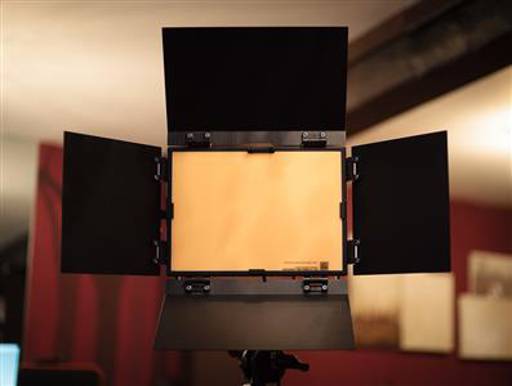This has been my favourite light since i got it at the beginning of the year (actually last year now, how time flies). Review done.
Area 48 Remote Phosphor Light Review

This has been my favourite light since i got it at the beginning of the year (actually last year now, how time flies). Review done.
Okay, a bit more. I’ve always had an issue with most of the LED lights out there at the moment. They’ve never seemed ‘right’ to my eye, nor on most recorded footage, especially on skin tones. I’ve tended to use those panels for rim lights and accents rather than keys. Admittedly I’d not been using the really expensive panels but the expensive ones i’d seen, or the footage from them, didn’t seem that much better than the mid range ones i had. Then there’s the very nature of them, even when diffused the little light sources do tend to produce messy shadows. Sometimes i’d light with one because of speed and then with more time set up an HMI or Kino through diffusion and realise how different they really are.
![[fb]](https://www.ome.media/media/007200000003C/59a05dc3fcf08500017d9758_Area48Closeup.jpg)
Close up -Each panel has the colour temp and CRI rating on it
But then on the other hand how flexible those LCD panels are. Batteries, portable, rig anywhere. So quick to set up, move around and work.
Kinos are quite bulky, mains only and pretty delicate. The light quality is better than the LEDs but even so, they’re not 100% there either.
![[fb]](https://www.ome.media/media/007200000003C/59a05dd29e639a0001cb2083_Area48Inside.jpg)
Inside - The inside shows the white chamber with the small bright Blue LEDs visible. These diffuse inside the chamber and cause the panel to illuminate
So enter Remote Phosphor. What is it? I’m no scientist but from my limited knowledge the general idea is to separate out the light emitting part from the colour generation part. So the light is basically some very high powered Blue/UV emitting diodes in front of which a plastic phosphor panel turns that energy into whatever full spectrum light is needed. So the basic idea is that different phosphor panels can produce different types of light. From the basic 3200K and 5600K to other colour temperatures and even green. The main benefits of this approach are firstly the light output is higher, secondly the whole panel itself emits light - there are no point sources and finally the colour spectrum just looks ‘right’.
So this panel generates more light than a Kino Diva 400, better light too and in fact better shadows. It actually looks more like natural light, as if from a bigger source.
![[fb]](https://www.ome.media/media/007200000003C/59a05ddb2b6ed30001131bb9_Area48Back.jpg)
The back - Showing a VLock adapter on the back
It’s portable and can even run off a V-Lock battery (although it does need a high spec battery, something that can deliver a full load of power)
The light can be dimmed in % increments. It’s flicker free down to around 15-20% after which i notice a small flicker. It can be DMX controlled i believe and there are some other modes (which i’ve not used) like Strobing for various effects work.
But overall, simply based on the quality of light - I cannot recommend this enough.
Downsides? Well, it’s heavier than i think it should be. The length of cable to the PSU block is stupidly too short, so when on a stand the power block needs taping to the side or some other form of fixing (use the Dedo approach of a loop on the PSU to hang it). I’m not a huge fan of the way it fixes to a stand either, the bolt comes loose very easily and needs tightening.
In this market there appears to be two main companies - BBS (Area 48) and Cineo (TruLight). The Cineo range looks lovely, but their equivalent light cannot be battery operated although they do have a new light that can be. Personally i think the design of the Cineo lights are a little nicer but the overall specifications of the Area48 tempted me more.
I can’t recommend it enough, it’s been a solid performer and out with us each time.
In fact alongside this i highly recommend the human light stand, that way not only can they hold the light but will move around as ordered (sorry, asked nicely). Try that with a large HMI and trailing ballast.
![[fb]](https://www.ome.media/media/007200000003C/59a05dea2b6ed30001131bc4_Area48outside.jpg)
Outside - Can you spot the light? Just next to the camera, you can just about make out the human light stand, our trusted Vadim. The light was on around 50% at this point